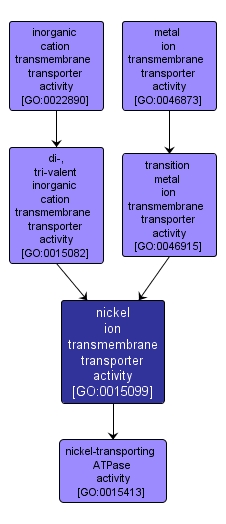GO TERM SUMMARY
|
| Name: |
nickel ion transmembrane transporter activity |
| Acc: |
GO:0015099 |
| Aspect: |
Molecular Function |
| Desc: |
Catalysis of the transfer of nickel (Ni) ions from one side of a membrane to the other. |
Synonyms:
- zinc, cadmium, cobalt, nickel, lead-efflux ATPase activity
|
|

|
INTERACTIVE GO GRAPH
|














